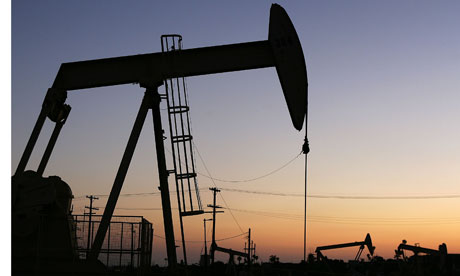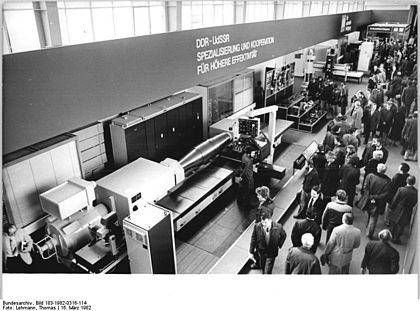Fuel Tank Monitoring Systems Offer Many Advantages

Fuel monitoring is critical to any operation requiring gas, oil or propane for business operations. If you want your operation to be profitable, then you need make sure that you not only protect this particular asset but also use it wisely. This is where fuel tank monitoring systems can pay off in big ways. They don’t just measure how much fuel is left in your storage tanks. They also boost your operational efficiency and save you money in many different ways.
Robust fuel frameworks have data-tracking components, such as sensors, built into their systems. This lets operators and owners alike be constantly mindful of details that include fuel levels, pressure, temperature, and more. Having access to this information is crucial to maintaining operations that are safe, steady, and profitable.
What to Look For in Great Fuel Tank Monitoring Systems
Fuel is always going to be categorized as a resource. The proper protection of that resource means you can make the most of it in your daily operations. Not only will fuel tank monitoring help you accomplish this but it will also help you maintain compliance with relevant environmental rules and regulations.
The right fuel tank monitoring system can help you manage every aspect of your fuel. This starts with procurement, and includes condition, usage, and eventual sale.
Basically speaking, a fuel tank monitoring system lets operators and owners boost the efficiency of their operations with live-time tracking of crucial metrics necessary for big decisions. Remote sensors let operators and owners monitor things remotely and make adjustments as necessary.
When issues or problems are detected, you can be alerted immediately. This lets you arrange for repairs and adjustments based on current data. You’ll not only get things going faster, but you’ll also be doing it on current data rather than information that is days to weeks old. Minimize your downtime and lost fuel.
Environmental compliance is another key feature of effective fuel tank monitoring systems. Fuel tanks always need regular maintenance. As they get older, they can start falling susceptible to algae, rust, and other things that impact fuel quality. These also mean risks of environmental impact, as well. If a fuel tank suffers damage, then there is the possibility of fuel escaping. Potential consequences include contaminated soil and groundwater nearby.
Fuel tank monitoring systems can give you expedient warnings and detection. That means you can arrange for faster repairs and curtail the local environmental impact.
Saving Fuel Matters
The more fuel you save, the more everyone saves. Fuel you lose or just lose track of costs you time and money, but those are also expenses you might wind up passing off to your own clients. Even if they don’t pay for it monetarily, they might pay for it with lost time.
Fuel that gets lost into the local environment costs everyone. Even local pollution adds up to the global destruction of planetary ecosystems. Also, cleanup and mitigation costs can wind up costing you lots of money, even on top of …

.jpg/220px-Photo_by_Mona_Mijthab,_July_2011_(6349812257).jpg) Although opinions vary on the future of fossil fuels such as oil, there is little debate that there is a finite supply of oil and that, at some point, mass produced alternative forms of energy will need to become economically viable. One alternative that has gained a lot of momentum is algae fuel.
Although opinions vary on the future of fossil fuels such as oil, there is little debate that there is a finite supply of oil and that, at some point, mass produced alternative forms of energy will need to become economically viable. One alternative that has gained a lot of momentum is algae fuel. With the high price of gasoline, I can safely say to you and recommend that if you are planning on purchasing a new automobile that you look for a very aerodynamic car to buy. I have a number of reasons for this and I like to go through that with you if you have a few minutes. You see, being the coordinator for a think tank which operates online we often talk about innovative designs and aerodynamic efficiency.
With the high price of gasoline, I can safely say to you and recommend that if you are planning on purchasing a new automobile that you look for a very aerodynamic car to buy. I have a number of reasons for this and I like to go through that with you if you have a few minutes. You see, being the coordinator for a think tank which operates online we often talk about innovative designs and aerodynamic efficiency. Buying a new hybrid would be great. Unfortunately new hybrids usually come with a premium price. That in my mind negates any cost savings you hope to gain. Most hybrids tend to cost $3-8k more than their non hybrid version, and don’t seem to get any more than maybe 10-15 miles more per gallon.
Buying a new hybrid would be great. Unfortunately new hybrids usually come with a premium price. That in my mind negates any cost savings you hope to gain. Most hybrids tend to cost $3-8k more than their non hybrid version, and don’t seem to get any more than maybe 10-15 miles more per gallon. Sport utility cars are acknowledged to be gas-guzzlers even though they provide far better gas mileage as compared to several cars. A fuel efficient SUV is ideal for people who usually transport bulky things, have numerous children and plan to do some off road driving once in a while or merely like an additional height for ease in getting in or out of the vehicle.
Sport utility cars are acknowledged to be gas-guzzlers even though they provide far better gas mileage as compared to several cars. A fuel efficient SUV is ideal for people who usually transport bulky things, have numerous children and plan to do some off road driving once in a while or merely like an additional height for ease in getting in or out of the vehicle. RV parks vary in amenities and price as much as the hotel/motel industry does. In RV parks as in hotels you can go from Motel 6 to New York Rich. But the key to a good RV park is for the owners to know their niche. In other words, be what you can comfortably be and charge accordingly. That pretty well describes the Montgomery South Campground, though one might suggest the price is a little on the high side.
RV parks vary in amenities and price as much as the hotel/motel industry does. In RV parks as in hotels you can go from Motel 6 to New York Rich. But the key to a good RV park is for the owners to know their niche. In other words, be what you can comfortably be and charge accordingly. That pretty well describes the Montgomery South Campground, though one might suggest the price is a little on the high side. It is well known that an army marches on food and water. Without a functioning supply line, armies starve and wars are lost. In the same way that they march on food, they drive and fly on fuel. Fuel Bladders are the easy way to keep fuel close to the equipment that needs fueling. A fuel bladder is a giant pillow like temporary device that can be filled safely with fuel. The largest off the shelf fuel bladder has a capacity of 20,000 gallons. Manufacturers also can manufacture fuel bladders over 100,000 gallon capacity as well!
It is well known that an army marches on food and water. Without a functioning supply line, armies starve and wars are lost. In the same way that they march on food, they drive and fly on fuel. Fuel Bladders are the easy way to keep fuel close to the equipment that needs fueling. A fuel bladder is a giant pillow like temporary device that can be filled safely with fuel. The largest off the shelf fuel bladder has a capacity of 20,000 gallons. Manufacturers also can manufacture fuel bladders over 100,000 gallon capacity as well! Diesel heaters, while not in common use, are often favored by campers, people who live or travel to isolated locations and for heating outside sheds or garages. There are many advantages to running a diesel heater. Diesel is very easy to find and it is a relatively cheap fuel. While care needs to be taken when transporting extra diesel fuel, it is generally easily transportable. If you are interested in buying a diesel heater here are a few tips on what to look for.
Diesel heaters, while not in common use, are often favored by campers, people who live or travel to isolated locations and for heating outside sheds or garages. There are many advantages to running a diesel heater. Diesel is very easy to find and it is a relatively cheap fuel. While care needs to be taken when transporting extra diesel fuel, it is generally easily transportable. If you are interested in buying a diesel heater here are a few tips on what to look for. Maximizing your Fuel Mileage
Maximizing your Fuel Mileage